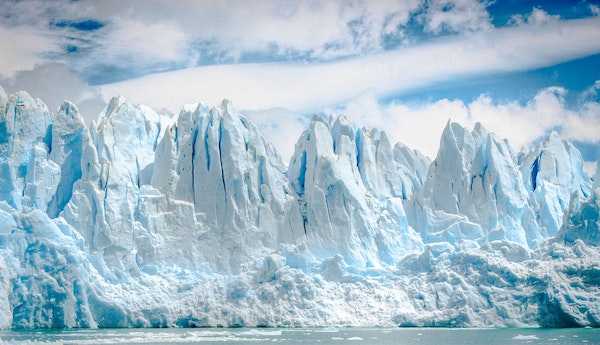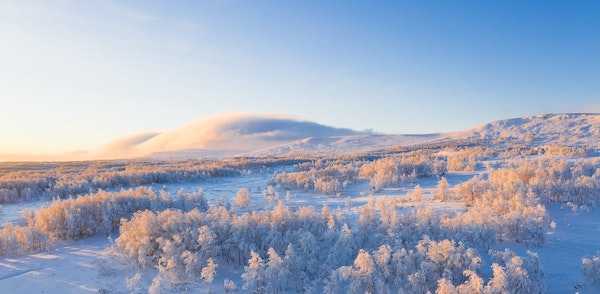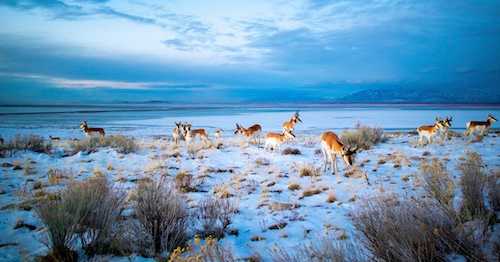FAQ 2: How will nature and the benefits it provides to people be affected by higher levels of warming?
The WGII overarching Frequently Asked Questions (FAQs) are an outreach material. They are based on the WGII Report and aim to help to interpret its concepts and findings to a broad audience. This version can still be subject to copyedits and tricklebacks.
Healthy ecosystems and rich biodiversity underpin human survival. They provide countless services that make our Earth a habitable place. However, climate change and increases in extreme weather events are drastically and progressively impacting nature, weakening the structure, functioning and resilience of ecosystems. As a result, nature’s contributions to human well-being are diminishing, threatening sustainable and just development – now and in the future.
The world’s ecosystems on land, in freshwater and in the ocean provide a wide array of essential services to humans. They produce the food we eat and the oxygen we breathe. They filter our water, recycle nutrients and help to limit global warming by storing large amounts of carbon. Furthermore, they cool the air and offer “green” or “blue” spaces such as parks and lakes for fun, adventure and relaxation, thus improving our health and mental well-being. In short, healthy ecosystems are essential for human survival and make our Earth liveable.
Climate change – with its slow-onset events like sea level rise and ocean acidification and increases in extremes – is drastically and progressively affecting our world’s biodiversity and ecosystems. Increasing temperatures and extreme events such as droughts, floods and heatwaves are exposing plants and animals to climatic conditions not experienced for at least tens of thousands of years. Observed increases in their frequency and intensity are starting to exceed the ability of many species to adapt. Based on increased observations and a better understanding of processes, we now know that the extent and magnitude of climate change impacts on nature are greater than previously assessed. The impacts we see today are appearing much faster, they are more disruptive and more widespread than we expected 20 years ago. And we know that climate change is strongly adding to, and even amplifying, the other stressors: many of our world’s ecosystems are already facing a biodiversity crisis due to human impacts such as deforestation, pollution, overfishing and land-use change. For numerous ecosystems, climate change impacts are an additional stress and even a deadly burden, depending on the level of global warming.
We see a growing number of scientific studies that present multiple lines of evidence showing climate change impacts. Increasing temperatures and extreme events change the seasonal timing of key biological events such as flowering, when animals emerge from hibernation, or annual migration, causing mismatches with important seasonal food sources. Examples include the timing of fish spawning and plankton blooms that fish larvae depend on for food, and insect availability at the time when birds are breeding.
Changing climatic conditions, including warming, also progressively shift plants and animals to higher latitudes, higher elevations or deeper ocean waters. Approximately half of the many thousands of species studied on land and in the ocean already show corresponding responses, leading to climate-caused local population extinctions and shifts in vegetation zones. In the ocean, marine plants and animals including entire communities have shifted their distributions poleward at an average speed of 59 km per decade due to increasing water temperatures. Ocean acidification and decreasing oxygen in the water also play a part. Together all three processes have caused a reorganisation of biodiversity over the past 50 years, especially at the ocean surface. Those species that cannot adjust or move fast enough are at high risk of becoming extinct.
As a result, the geographic patterns and the regional and local abundance of plants and animals are changing, with potentially severe impacts for herders, farmers, fishers, hunters, foragers and other people who directly rely on nature’s services. As an example, the sustainable potential for fishery catches of several marine fish and shellfish is estimated to have decreased by 4.1% globally in the 70 years between 1930 and 2010 due to ocean warming. Regions like the North Sea and the Celtic Sea have experienced even stronger decreases in fisheries productivity primarily due to warming, but other human activities such as overfishing have played a role as well.
Although there have been some positive impacts on agricultural productivity in some high-latitude regions, with ongoing warming, current global crop and livestock areas will become increasingly unsuitable. Even in a world with low greenhouse gas emissions (warming below 1.6°C by 2100), some 8% of today’s farmland is projected to become climatically unsuitable by 2100. Under the same conditions, fisher people in Africa’s tropical regions are projected to lose between 3 to 41% of their fisheries’ yield by the end of the century due to local extinctions of marine fish. Fisheries provide the main source of protein for about one-third of people living in Africa. It supports the livelihoods of 12.3 million people. Declining fish harvests could leave millions of people vulnerable to malnutrition.
Increases in frequency and severity of extreme weather events such as heatwaves and heavy rain are occurring across all continents and all oceans, resulting in local mass die-offs and local extinctions because the impacts of those events already exceed what many organisms can tolerate. Prominent examples of species being pushed way beyond their temperature limits are reef-building warm-water corals that are dying. Their global decline shows that we don’t need to look into the future to recognize the urgency of climate action.
The more often ecosystems are impacted by extreme events and the more intense the event, the further they are pushed towards so-called tipping points. Beyond those points, abrupt and in some cases irreversible changes can occur – such as species going extinct. This risk increases steeply with rises in global temperature. Current projections imply that at a global warming level of 2°C by 2100, up to 18% of all species on land will be at high risk of going extinct. If the world warms up to 4°C, every second plant or animal species that we know of will be threatened.
TThe extinction risk is especially high for cold-loving species living in the high mountains or in polar regions, where climate change impacts are unfolding at global maximum speed and extent. With global warming of around 4°C by 2100 (very high greenhouse gas emissions scenario), mass mortalities and extinctions are expected that will irreversibly alter globally important areas, including those that host exceptionally rich biodiversity such as tropical coral reefs and cold-water kelp forests and the world’s rainforests. Even at lower levels of warming of 2°C or less, polar fauna (including fish, penguins, seals, and polar bears), tropical coral reefs and mangroves will be under serious threat.
Impacts will continue to increase, weakening the structure, functioning and resilience of ecosystems and thus the services they provide, including their ability to regulate our world’s climate. At present, ecosystems are removing and storing more carbon from the atmosphere than they emit, hence naturally helping to balance global warming. However, logging in remaining natural forests; draining and burning of peatlands, and increasing climate change impacts, such as the thawing of Arctic permafrost, are causing some of those ecosystems to emit more carbon to the atmosphere (from decomposing dead plant material) than they naturally remove (through vegetation growth). The thawing of Arctic permafrost will cause enhanced methane release with further warming. All of these systems have the potential to contribute to accelerating climate change and further climate change will exacerbate this.
This and other trends can still be reversed by restoring, rebuilding and strengthening ecosystems and by managing them sustainably – which will also support the well-being and livelihoods of people. To achieve this balance, drastic greenhouse gas emissions reductions are required now to avoid further global warming and its deadly impacts on ecosystems around the world. For indeed, humans are just one of the many living organisms in our beautiful and complex world.


